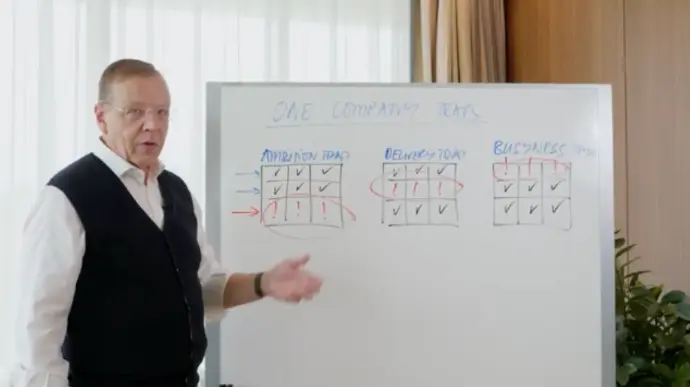Who is this course for?
This program is designed for CEOs, Executive Sponsors, HR Heads, and other C-level roles whose mandate includes organizational development, long-term competitive positioning, and cultural alignment.
In this course, Senior Executives will learn to enact high-level change management and governance mechanisms to ensure the Triple Fit Strategy is a core, enduring competency.

Actionable Course Modules to Write Your Own Triple Fit Strategy Playbook

Chapter 1: Diagnosing Your Customer-Centric Strategy
This chapter begins with an Executive Audit to establish the strategic imperative for organizational transformation. Leaders receive a high-level blueprint of the Triple Fit Strategy (TFS) and use a proven executive framework to evaluate the existing corporate strategy, determining how customer-centric the organization truly is at an institutional level. This diagnosis provides the critical data needed to justify and prioritize structural change.

Chapter 2: Building the Orchestrator Organization
This chapter focuses on structural design and organizational architecture. Executives identify the company's current dominant sales perspective and then learn the four key competitive advantages of becoming an "Orchestrator" organization—one structurally built to manage complex B2B partnerships. The chapter concludes with strategies for developing and managing the sales talent pool required for this strategic and cultural transformation.

Chapter 3: Activating Executive Sponsorship and Growth Potential
This chapter addresses high-level alignment and executive activation. Leaders learn to diagnose and formalize the ideal role of executive sponsorship, profiling the required behaviors and mandate of a "Growth Champion" who actively drives mutual growth. Crucially, this chapter provides a framework to calculate the growth potential and projected ROI unlocked by fully implementing the TFS across the organization.

Chapter 4: Mastering Inter-Organizational Alignment
This chapter details how to master inter-organizational alignment by breaking down internal silos and fostering cross-functional collaboration. It outlines strategies to create a shared language for discussing customer value across departments (Sales, R&D, Service), ensuring seamless communication. Executives learn techniques to connect the dots between organizations and proactively avoid "one-company traps" associated with internal friction and misaligned objectives.

Chapter 5: Strategic Integration and Cultural Anchoring
This final chapter focuses on enduring change and cultural anchoring. Leaders examine how the Triple Fit Strategy complements other strategic frameworks (like Blue Ocean Strategy) and learn how to perfectly align corporate business and customer strategies. The course culminates in practical steps for anchoring customer-centric behavior by institutionalizing and rewarding the actions that drive long-term, mutual value creation.

Meet Your Instructor
Prof. Dr. Christoph Senn is a renowned B2B Sales Expert. He is the co-author of the HBR-published book 'Triple Fit Strategy' and is the leading global authority on key account management, sales leadership, and customer-centricity, bringing 25+ years of research and consulting experience to these courses.
Complete Your Learning Package
Harvard Business Review Press
Triple Fit Strategy
Chosen for Forbes Top 10 Book List for 2024
Consider this question posed in the introduction: “What if we—supplier and customer—were one company?” The answer to that question is the foundation of what this book is about. At the end of each chapter are reflection questions. The answers to these questions will be what brings the book’s content to life.


Triple Fit Strategy is featured in
We are in good company.

Triple Fit 360
Your toolset to develop validated one-page business roadmaps
The Triple Fit 360 toolset is a powerful way to assess B2B relationships and fast-track your growth plan. You will not only develop a one-page business roadmap, but also find analytical features for game-plan coaching, hot issues management, benchmarking, and strategy checks.


